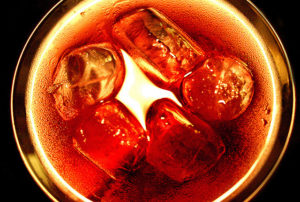Playlist
Show Playlist
Hide Playlist
Elimination of Water – Alcohols
-
Slides 05 Chemistry Advanced Le Gresley.pdf
-
Download Lecture Overview
00:01 Now, let’s have a quick look at elimination reactions. 00:04 We mentioned before that it is possible for us to protonate the OH group on an alcohol, but it isn’t just a question of it being a prelude to nucleophilic substitution. What can happen, in this particular case, is dehydration. And the example reaction shown here is where we have our alcohol in the presence of sulphuric acid which is essentially dehydrated, note because we’re generating water, to give rise to a carbon-carbon double bond. 00:32 In terms of elimination via the E1, that is elimination, unimolecular reaction, this tends to be preferred in the order of tertiary, it’s better than secondary, it’s better than primary. 00:46 The difference between alkyl halides and alcohols is their elimination reactions don’t proceed with a base, as a deprotonation of the hydrogen from the hydroxyl group would happen instead. 00:59 An interesting experiment that you may want to do, if you happen to have access to concentrated sulphuric acid, is actually to react it with a bowl of sugar. Conc. sulphuric acid will actually remove the water from the carbohydrate sugar leaving only carbon. And therefore, you can char your sugar in the presence of sulphuric acid and generate carbon. This shows how strong sulphuric acid is as a dehydrating agent. 01:26 So, let’s have a quick look at the mechanism here. 01:29 So, we said before, it’s possible to protonate the oxygen. This is by virtue of the fact that the oxygen in an alcohol has lone pairs, two of them, in fact. They can be moved onto the H+ and you generate a positive charge which formally we recognise here on the oxygen. 01:45 So, the first step is OH protonation. 01:49 The second step is elimination of water. This is shown as a unimolecular mechanism. 01:58 And then, finally, we see that we’ve got a possibility of reproducing or releasing H+ via the formation of a double bond by the loss of electrons from a carbon-hydrogen sigma bond on the beta carbon to what was our alcohol. This constitutes the third step. 02:17 Finally, we have, as we saw before in the case of the haloalkanes, two possible regioisomers of the alkenes we wish to generate. That is where the double bond forms within the centre and that’s where the double bond forms at the terminus. 02:34 Vicinal and geminal hydrogens. 02:38 This a term that you’ll come across when you look at nomenclature, particularly common names, such as vinyl chloride, for example, in polymer chemistry. 02:47 Vicinal hydrogens are co-hydrogens which are on carbons which are neighbouring to each other whereas geminal hydrogens are hydrogens which are on the same carbon. And this, from a nomenclature perspective, is important to understand. 03:00 Now, I want to briefly touch upon ester formation.
About the Lecture
The lecture Elimination of Water – Alcohols by Adam Le Gresley, PhD is from the course Organic Chemistry.
Included Quiz Questions
Which of the following options represents a correct reaction between sucrose and concentrated sulfuric acid (conc. H2SO4)?
- C12H22O11 + conc. H2SO4 → 11C + 12H2O + CO2 + SO2
- C6H12O6 + conc. H2SO4 → 6C + 6H2O
- C12H22O11 + conc. H2SO4 → C6H12O6 + 6C + 5H2O
- C12H22O11 + conc. H2SO4 → 2C6H12O6 + SO3
- 2C6H12O6 + conc. H2SO4 → 12C + 12H2O
Which of the following correctly describes the relative rates of E1 elimination reactions for alcohols?
- Tertiary > Secondary > Primary
- Secondary > Primary > Tertiary
- Primary > Tertiary > Tertiary.
- Primary > Secondary > Tertiary
- Tertiary > Primary > Secondary
Which of the following occurs during elimination reactions of alcohols?
- An oxygen atom gets protonated, followed by the elimination of a water molecule.
- KOH or NaOH takes the hydrogen atom from alcohol.
- The base acts as a catalyst to speed up the extraction of H+ from OH- group.
- Concentrated H2SO4 acid causes dehydration of the alcohol and the generation of water and solid carbon.
- The alcohol gets converted into a mixture of alkene and alkane sulfonic acid.
Which of the following is NOT a correct statement describing elimination reactions of alcohols?
- NaOH and KOH are the best suitable catalysts to carry out elimination reactions of alcohols.
- Due to the high stability of secondary and tertiary carbocations, the secondary and tertiary alcohols undergo elimination via an E1 mechanism readily.
- During an elimination reaction of alcohol, the intermediate carbocations can undergo rearrangements.
- Elimination reactions of alcohols are regioselective.
- Concentrated H2SO4 is a suitable catalyst to carry out elimination reactions of alcohols.
Customer reviews
5,0 of 5 stars
| 5 Stars |
|
5 |
| 4 Stars |
|
0 |
| 3 Stars |
|
0 |
| 2 Stars |
|
0 |
| 1 Star |
|
0 |




